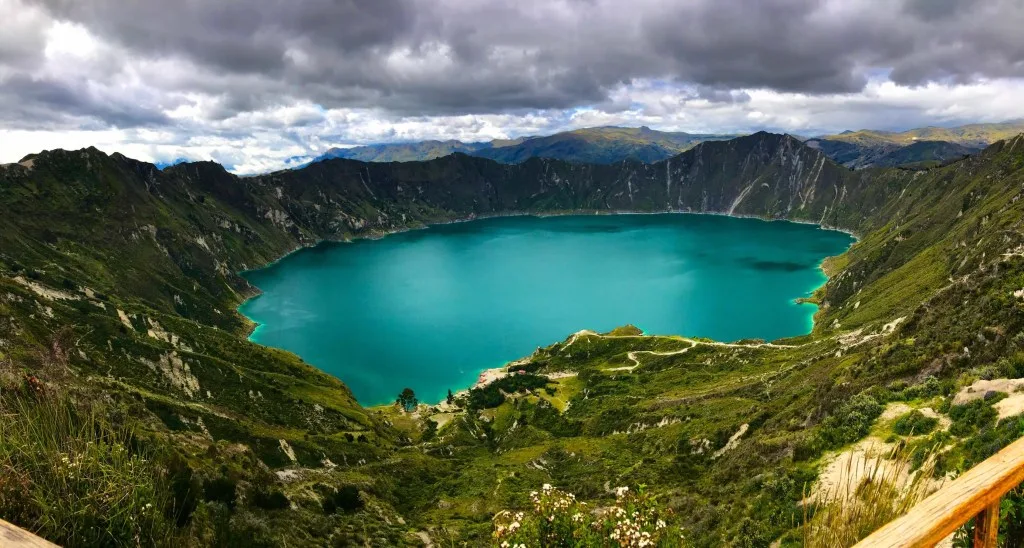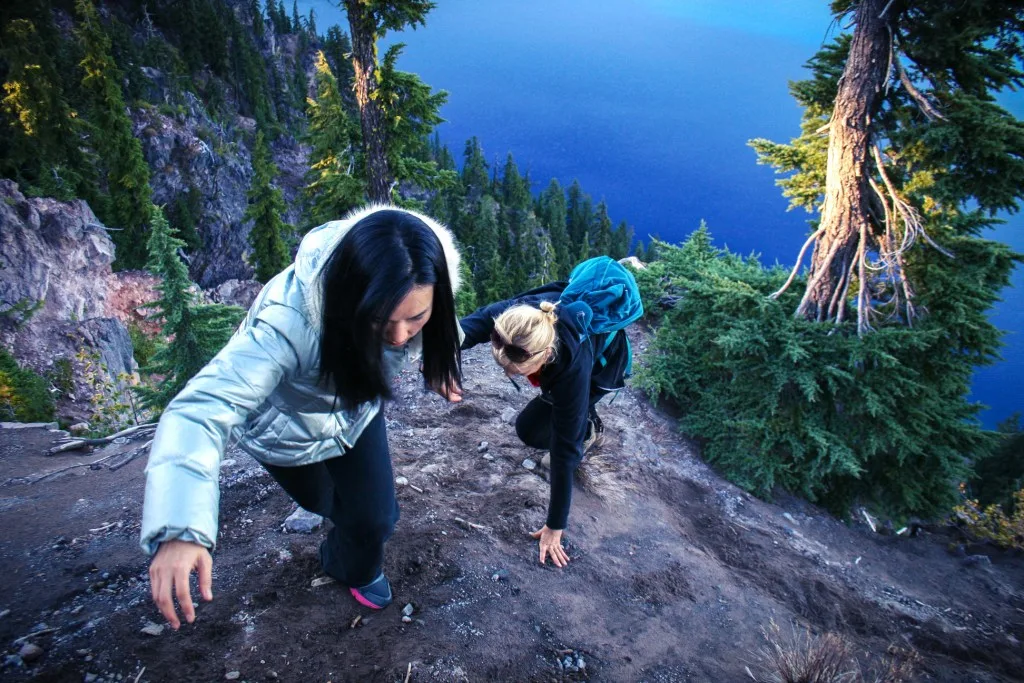You can find one of the clearest and deepest lakes in the entire world, right in the United States. The beauty of Crater Lake reaches the surrounding landscapes.
Massive forests filled with lodgepole and ponderosa pines create an epic view that attracts over 600,000 visitors each year. While the bottom of Crater Lake remained a mystery for decades, we now know what’s living at the bottom.
So what’s at the bottom of Crater Lake? Let’s look and see!
Where Is Crater Lake?
Crater Lake is in the heart of Crater Lake National Park in Southern-Central Oregon. It is approximately 100 miles east of the Pacific Ocean on the crest of the Cascade Mountains and is roughly an hour and 40 minutes south of Bend, Oregon. It’s also within driving distances of Eugene, Oregon, and Redding, California, for a weekend visit or a short day trip.
Pro Tip: We found the Best Free Campsites near Crater Lake!
What Exactly Is Crater Lake?
Crater Lake is the remains of a massive 12,000-foot tall volcano. The eruption of Mount Mazama caused the volcano to collapse in on itself approximately 7,700 years ago.
Tribal legends tell a story of the sacred mountain being the site of a battle between spirits of the sky and the mountain. The eruption indicated the end of the struggle between the two spirits.
Crater Lake remains a sacred place for the native Klamath tribe. It played a significant part in their ability to hunt, gather food, and participate in spiritual rituals. Guests must be respectful and mindful of the site’s sacredness to the native people.

How Deep Is Crater Lake?
At 1,943 feet (592 meters), Crater Lake is the deepest lake in the United States. However, it only makes the top 10 list of deepest lakes in the world by approximately 26 feet.
Despite its depth, it has no rivers, streams, or springs flowing into the lake. Because the area is also one of the snowiest places in the United States, the melting snow and abundance of rain are sufficient to maintain the water level.
The Hydrothermal Vents Of Crater Lake
Hydrothermal vent explosions can occur under the right conditions at Crater Lake. Magma or other hot rocks encountering water can cause these explosions to occur. When the hydrothermal vents explode, they can launch chunks of stones for more than a couple of miles at hundreds of meters per second.
Not only can these vents launch rocks, but they can also create waves that are several feet high. This can be very dangerous for boaters on the lake or those enjoying the view from the shoreline. You can’t bring your boat or other floatation devices onto the lake as the only boats are private concessionaires during the summer months.
The Moss At the Bottom Of the Lake
Mark Buketnica, a Crater Lake National Park aquatic ecologist, described the moss at the bottom of Crater Lake “like no other environment I’ve seen.” Buketnica and a team of scientists studied samples brought up from the bottom of Crater Lake to learn more about the moss.
The moss primarily lives on platforms of volcanic rock surrounding islands in the lake. Scott Girdner, a fisheries biologist and partner to Buketnica, states, “ We don’t have any good guesses on how old it is or how long it took to form.” The one thing the team does know is that it’s not any older than 7,700 years, as that’s the approximate timeframe that the volcano would have erupted to form the lake.
Researchers have been perplexed since the late 1980s when they used robots and other remote vehicles to discover the moss. There’s some weight behind the theory that the moss helps the lake maintain its clarity. The lake’s frigid waters and ample oxygen allow the moss to decompose slowly.
While scientists have learned more about the lake’s bottom, it’s created many more questions than answers. Scientists will undoubtedly continue to dive to the lake’s deepest sections to learn more about this unique lake.

Tunnels in the Deep
At the bottom of Crater Lake are some of the most mysterious pits and depressions, or fumaroles. These tube-like structures range in size with diameters from several inches to tens of meters. Scientists and NPS officials have been unable to discover how these tubes and holes form.
They know that they are an odd collection on the surface of dead moss layers and are more common around the Wizard Island section of the lake.
Does Anything Live At the Bottom Of Crater Lake?
Despite being almost 2,000 feet below the water’s surface, scientists have discovered colonies of moss and bacteria along the lake floor. This is especially perplexing for scientists as the water at that depth contains practically no nutrients whatsoever. However, the moss and bacteria have been able to survive.
The lake is a closed ecosystem but is home to a tiny population of fish introduced in the 1800s by humans. Other than that, it’s not much more than hydrothermal vents, moss, and bacteria. Despite the chilly water temperatures, the hydrothermal vents show that the volcano is still actively warming portions of the water.
There’s More to Crater Lake Than Meets the Eye
Crater Lake is a fantastic place to visit. While it may be hard to believe, all you see in and around the park is just a drop in the bucket compared to what’s happening below the lake’s surface.
You’re only seeing a small portion of the mysterious lake that scientists are trying to understand.
Have you visited Crater Lake National Park? Tell us your experience in the comments!
Discover the Best Free Camping Across the USA
To be honest with you, we hate paying for camping. There are so many free campsites in America (with complete privacy).
You should give it a try!
As a matter of fact, these free campsites are yours. Every time you pay federal taxes, you’re contributing to these lands.
Become a FREE CAMPING INSIDER and join the 100,000 campers that love to score the best site!
We’ll send you the 50 Best Free Campsites in the USA (one per state). Access the list by submitting your email below:
Wow! This is an amazing blog post!